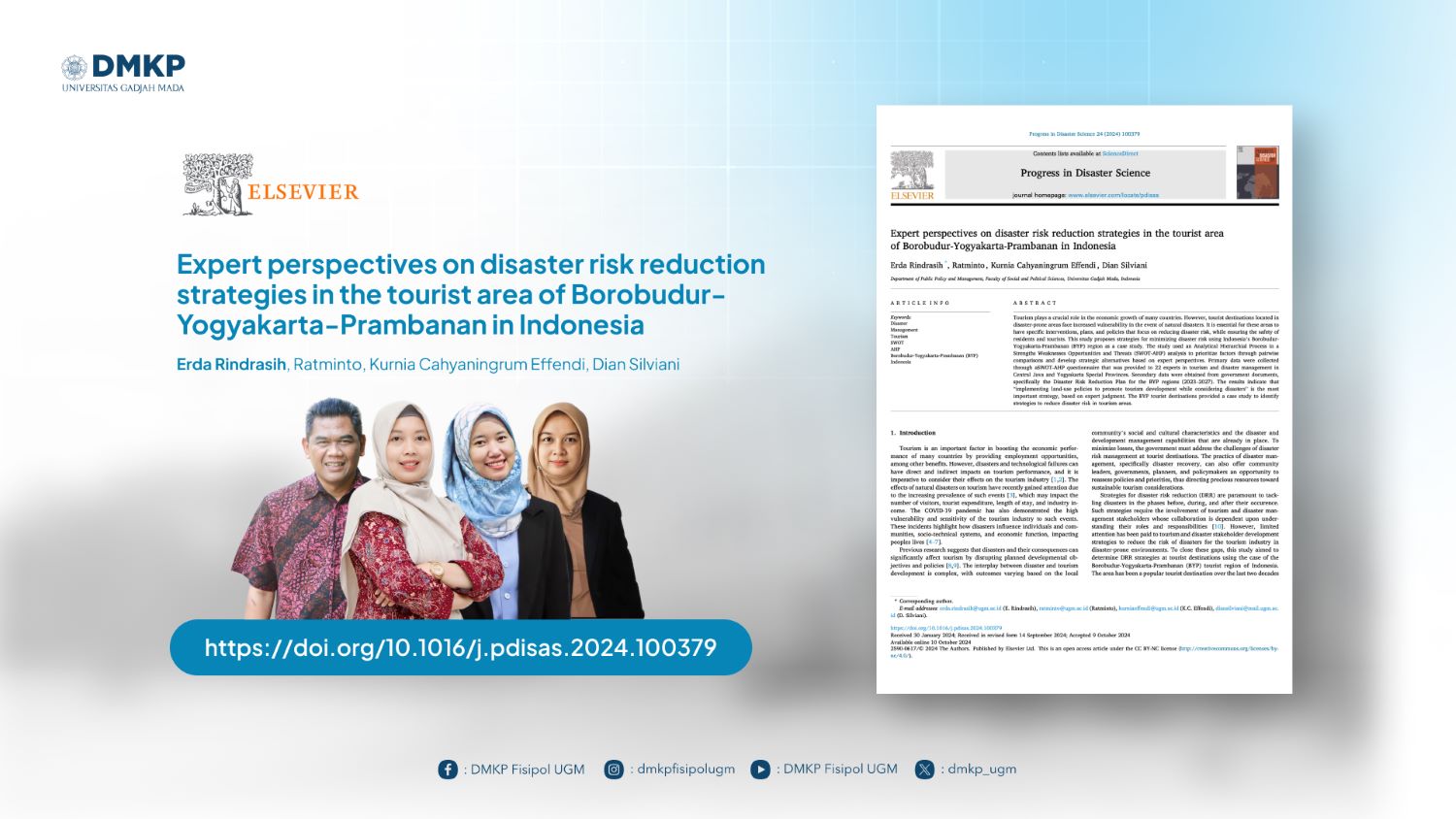Author
Erda Rindrasih, Ratminto, Kurnia Cahyaningrum Effendi, Dian Silviani
Abstract
Tourism plays a crucial role in the economic growth of many countries. However, tourist destinations located in disaster-prone areas face increased vulnerability in the event of natural disasters. It is essential for these areas to have specific interventions, plans, and policies that focus on reducing disaster risk, while ensuring the safety of residents and tourists. This study proposes strategies for minimizing disaster risk using Indonesia’s Borobudur-Yogyakarta-Prambanan (BYP) region as a case study. The study used an Analytical Hierarchial Process in a Strengths Weaknesses Opportunities and Threats (SWOT-AHP) analysis to prioritize factors through pairwise comparisons and develop strategic alternatives based on expert perspectives. Primary data were collected through a SWOT-AHP questionnaire that was provided to 22 experts in tourism and disaster management in Central Java and Yogyakarta Special Provinces. Secondary data were obtained from government documents, specifically the Disaster Risk Reduction Plan for the BYP regions (2023–2027). The results indicate that “implementing land-use policies to promote tourism development while considering disasters” is the most important strategy, based on expert judgment. The BYP tourist destinations provided a case study to identify strategies to reduce disaster risk in tourism areas.
Keywords,
Disaster, Management, Tourism, SWOT, AHP, Borobudur-Yogyakarta-Prambanan (BYP), Indonesia
Access link:
https://doi.org/10.1016/j.pdisas.2024.100379




